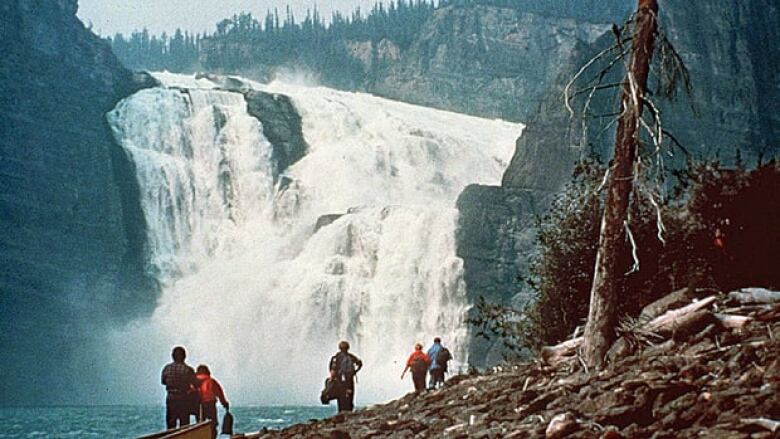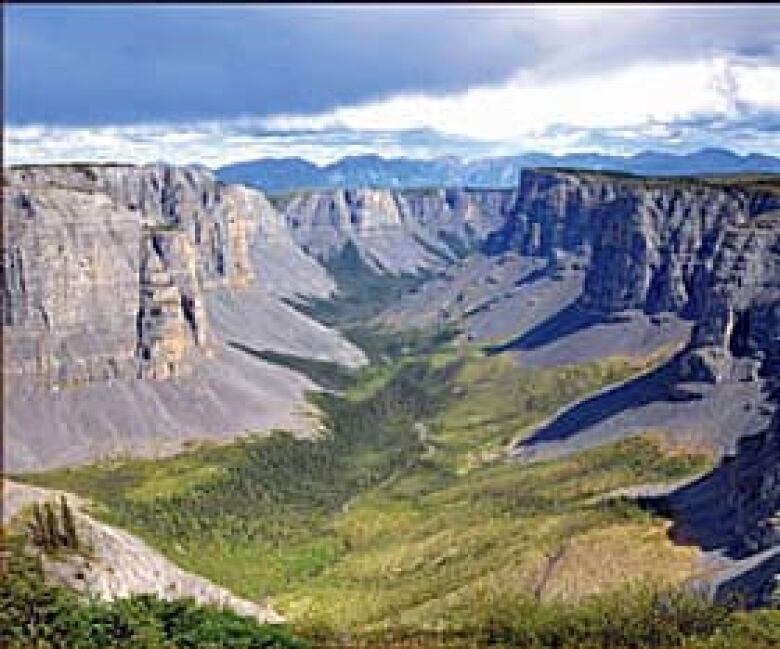5 of Canada's northern national parks

Prime Minister Stephen Harper officiallyannounced the creation of Canada's 44th national park, Ntsihchoh (pronounced Naats-each-choh), at the headwaters of the South Nahanni River in the Northwest Territories.
Ntsihchoh will be a national park reserve, a designation that is given to national parks that are subject to one or more aboriginal land claims and allows for aboriginal people to continute to hunt, trap and fish in the area and to be involved in park management. In this case, the federal government is in negotiations with the Sahtu Dene First Nations and Mtis. Once land claims are resolved, its status can be changed to national park.
Here's a selective look atsome of Canada's otherexisting national parks in theNorth:
Nahanni National Park Reserve(Northwest Territories)

Set aside as a park reserve in 1972 and expanded by the Harper government in 2009, this national park reserve in the Dehcho First Nations region in Northwest Territories stretches 4,765.2 sq. kilometres along the Nahanni River, a Canadian Heritage River. The area features sulphur hotsprings, alpine tundra, mountain ranges, spruce and aspen forest and the Virginia Falls and is home to grizzly bears, woodland caribou and Dall sheep. For visitors, its four canyons and river system offer whitewater paddling and hiking trails, and commercial guides and outfitters operate in the park. It was designated a UNESCO World Heritage site in 1978. Amid controversy over zinc mining operations in the area, the expansion of the park, and the creation of the Ntsihchoh National Park Reserve, is seen as bolstering protection of the sensitive Nahanni River watershed.
Wood Buffalo National Park(Alberta and Northwest Territories)
Extending from northern Alberta into the Northwest Territories, Wood Buffalowas created in 1922 to protect the last bison herds in northern Canada, which were imported to the area between 1925 and 1928. It is Canada's largest national park, and one of the largest in the world, at 44,807 sq. kilometres. Aboriginal people, which today include Cree, Chipewyan and Mtis, have lived in the northern boreal plains area for more than 8,000 years, and Wood Buffalo was recognized as a UNESCO World Heritage site in 1983. In addition to free-roaming bison, the park is the last natural nesting place for endangered whooping cranes and its wetlands provide crucial grounds for migratory birds.
Sirmilik National Park(Nunavut)

This Arctic national park on the northern tip of Baffin Island was created by the Chretien government in 1999 and encompasses three areas: Bylot Island, which has mountains and coastal lowlands and is home to seabird colonies; Oliver Sound, a long fiord that offers visitors boating, hiking and camping; and the Borden Peninsula. Sirmilik is Inuktitut for "the place of the glaciers," and the park features several characteristics of glacial activity, including icebergs and moraines of glacial debris. The park is also known for curious geological features, such as rock columns called "hoodoos" on the Borden Peninsula, and cracked-earth polygons caused by the freezing and thawing of the tundra.
Quttinirpaaq National Park(Nunavut)
Canada's second-largest national park, stretching 37,775 sq. kilometres, is located on the most northerly land in North America. Created in 1986, the park is home to such wildlife as the Arctic hare, Peary caribou, narwhals, polar bears and muskoxen, and at least 21 species ofnesting birds. More than half of the park lies in a chain of mountains known as the Grant Land Mountains, much of which is capped by glaciers, including Mount Barbeau, the highest mountain in eastern North America (2,616 metres elevation). Despite its remote northern location, the area has seen waves of human settlement dating back thousands of years, including the Dorset culture and the Thule people, ancestors of the modern Inuit.
Ukkusiksalik National Park(Nunavut)
Founded in 2003, Ukkusiksalik park encompasses 20,500 sq. kilometres of tundra and Canadian Shield lying south of the Arctic Circle along the inlet of Wager Bay on northwestern Hudson's Bay. The park land is described by Parks Canada as uninhabited, but there are neighbouring Inuit communities that still hunt in the area and over the past 3,000 years the land was the site of settlements of the earlier Dorset and Thule cultures as well as European whalers and trappers and Hudson's Bay Co. trading posts, and archeological sites remain for visitors to experience.
Canada's other northern national parks are:VuntutandIvvaviknational parks andKluane National Park and Reserve(Yukon);AulavikandTuktut Nogaitnational parks (Northwest Territories);AuyuittuqNational Park (Nunavut); andTorngat Mountains National Park(Newfoundland and Labrador). View our map ofall 44 national parks in Canada.
Source: Parks Canada












_(720p).jpg)


 OFFICIAL HD MUSIC VIDEO.jpg)
.jpg)



























































































